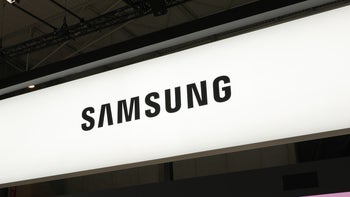COVID-19 could delay the future production of more powerful smartphones

The COVID-19 pandemic has greatly affected everyone regardless of where they live. It also has impacted the manufacturing and distribution of products including those in the mobile industry, including devices and components that have yet to be assembled. Thanks to the coronavirus outbreak, Digitimes reports that Samsung is pushing back the date when it hopes to start volume production of 3nm chips to 2022. Originally, the plan was to begin this testing by 2021. Keep in mind that volume production is not the same as mass-production.
Samsung has said that its 3nm chips will deliver a hike of 35% in performance compared to 5nm chips and a 50% savings in energy consumption. For its 3nm chips, Samsung is moving from using FinFET transistors to MBCFET (Multi-Bridge-Channel FET, multi-bridge-channel field effect tube) technology. The manufacturing process is compatible with FinFET production which should make it easier for Samsung to make the move to 3nm. TSMC also plans on jumping on the 3nm train in 2022-2023. The company is the largest independent foundry in the world and churns out a number of very important components for the mobile industry. This includes Apple's A-x SoCs, the Qualcomm Snapdragon chips (including modem chips), and Huawei's Kirin chipsets.
The 2020 Apple iPhone 12 series could be the first smartphones to use a 5nm SoC
The process node used in the production of chips relates to the number of transistors that can fit in a square mm. The larger that number, the more powerful and energy-efficient a chip is. Starting this year, both TSMC and Samsung are scheduled to roll 5nm chips off of their assembly lines packed with approximately 84% more transistors per square mm than the number employed in the currently used 7nm chips. 5nm chips will have a transistor density of 171.3 million per square mm.

The Apple iPhone 12 series could be the first smartphones powered by a 5nm chipset
To put this in perspective, Apple's 7nm A13 Bionic SoC features 8.5 billion transistors while the 5nm A14 Bionic will have 15 billion transistors shoehorned inside it. This all relates to an observation made by Intel co-founder Gordon Moore in the 1960s. Originally, "Moore's Law" called for transistor density to double every year and was changed to every other year in the 1970s. What this has not been followed by chip makers perfectly, for the most part the trend line has remained intact.
The first two smartphone lines to employ 5nm chips will probably be the 2020 5G Apple iPhone 12 series and the Huawei Mate 40 family thanks to the A14 Bionic and the unofficially named Kirin 1012 SoC respectively. The Snapdragon 875 Mobile Platform will be the first 5nm chipset employed on Android phones licensed by Google.
Beyond 3nm we are possibly looking for Moore's Law to remain in effect with 2.1nm, 1.5nm, and 1nm nodes. Foundries and chip designers are looking even further ahead. TSMC announced last June that it has started R&D on 2nm chipsets and under its best-case scenario, it could mass-produce them in 2024. But the truth is that both TSMC and Samsung are still spending hundreds of millions of dollar building facilities for 3nm, and we've yet to own any device powered by a 5nm chipset.
So how far have we come? The Apple iPhone 4, released in 2010, was powered by the A4 SoC. This chip featured a Cortex-A8 CPU core running at a clock speed of 800MHz for the iPhone (1GHz for the iPad). Produced by Samsung, the A4 was made using Sammy's 45nm process. The currently employed 7nm A13 Bionic is a hexacore SoC with a pair of high-performance CPU cores called Lightning running at a clock speed of 2.65GHz. The remaining four energy-efficient CPU cores are called Thunder.











Things that are NOT allowed: